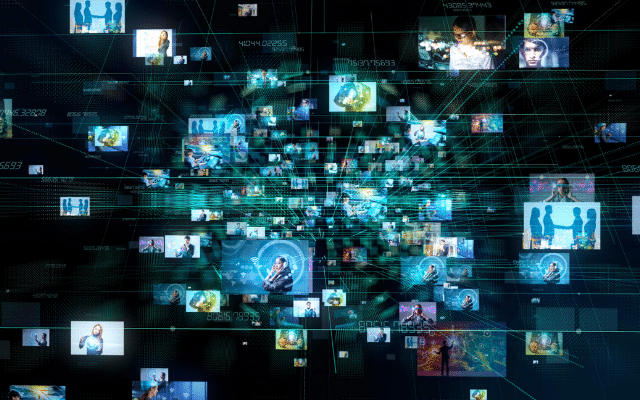AI and video analytics: How data becomes intelligent
Video analytics have huge implications for consumer behaviour, security, and privacy. Depending on its application, Artificial Intelligence (AI) in video analytics has a litany of outcomes—whether its creating bespoke Netflix series, tracking criminals or understanding movement in public spaces.
For example, using AI and machine learning technology can quickly and accurately analyse footage from CCTVs—helping law enforcement agencies find a match from a gallery of convicted criminals or suspects.
However, there is also an unintended dark side to this technology. Security measures should always be in place to protect the privacy and data of end-to-end users— considering the sheer quantity and quality IP that vendors and clients are set to gain from utilising AI-powered video analytics.
AI in surveillance: Market analysis
The Global AI-Powered Video Analytics Market is expected to grow at a CAGR of 41.76 per cent during the period 2018-2022, according to a report by Research and Markets.
The four major end-users for AI-powered video analytics include retail, transportation, infrastructure, and enterprise, distributed along the Americas, and throughout the APAC, and EMEA regions.
Although the retail segment held the largest market share during 2017, equivalent to nearly 38 per cent of the total market, the analysts expect that by 2022 the segment is going to decrease nearly two per cent.
Transportation will account for nearly 24 per cent of the total market share by 2022, becoming the fastest growing end-user for AI-powered video analytics.
The leading region for the global AI-powered video analytics market share in 2017 was the US with nearly 52 per cent of the total market. However, it is expected to decrease to 45 per cent in the coming years, whilst APAC is expected to reach the highest growth by 2022.
According to the report, the increasing demand for data integration and visual analytics will result in visible progress for market growth. Enterprises across the globe are adopting more data integration solutions in order to overcome the difficult process of deploying and maintaining reliable data interfaces. As well as taking the manual labour out of analysing and understanding the big data garnered by these innovations.
The promise that AI-powered video analytics has the capacity to offer on-demand accessibility to real-time integration of data and analysis for effective and informed decision making is making waves.
Using AI, machine learning, and powerful analytics, big data goes through the process of extracting value that is transformed in intelligent and insightful information. This makes, for example, law enforcement agencies jobs a little easier—or at least more efficient. A few decades back, surveillance cameras collected evidence that was useful for investigations as well as for monitoring events remotely in real-time. However, much of that data was never used since extracting value manually was difficult, costly, and painfully slowly. Now, AI technology responds to the needs of dealing with vast amounts of unstructured data collected by CCTVs.
In the private sector, physical security measures are very much on par with data and cyber security. AI-powered video analytics bridge the two frontiers, working in tandem.
Benefits vs. challenges of AI-powered video analytics
There are real causes for concern when we look at AI-powered analytics in the realm of surveillance, but there are also boons for the application. Since most surveillance cameras are still passive this means a human eye is still needed to watch live footage.
The obvious advantage of combining AI and CCTV is speeding up data analysis. AI brings a fast and intelligent brain to the CCTV’s eyes.
Privacy and security are still the two main concerns and challenges for AI-powered video analytics.
From design to manufacturing to deployment, CCTV cameras must include the latest and most advanced security features and considerations in order to protect end-to-end data, especially when deployed at mass scale in smart city infrastructures.
Potential risks of AI-powered video analytics
There is a risk that CCTVs can be hacked and the data sold or misused. If this happens, there is the potential that such data will be used for targeted cyber-security hacks, mass-scale private data breaches, and even unethical targeted digital advertising.
The availability of sophisticated city-wide surveillance allows governments to track huge numbers of private citizens, storing data without public knowledge (or consent). In theory, Police can remotely tail the public around by simply uploading a mugshot into a database.
AI analyses video feeds in a matter of seconds using thousands of natural language queries. While a human presence is still required to ‘feed’ the technology in most cases, some companies are building AI straight into the hardware. Integrating AI into the camera means that they do not require an Internet connection, nor a human, to work—such as the Deep Learning vision systems from startup smart camera builder BoulderAI. As is often fictionalised and prophesied in Hollywood, there is the chance for machine learning to go rogue.
With the advent of the Internet of Things (IoT), so many devices, including smart cameras, are becoming interconnected. Taking into account any vulnerability in AI-powered video analytics is paramount in order to ensure privacy, and data security.
Register now for free entry into the Security Exhibition & Conference, from 24-26 July 2019 in the ICC Sydney.
-
Stay up to date with the latest news and Security updates.
- Subscribe


